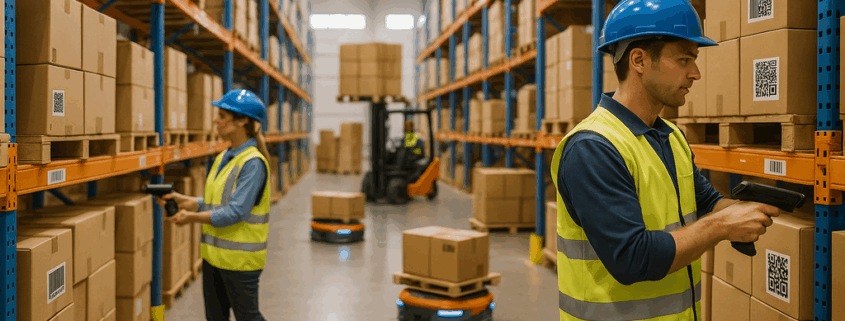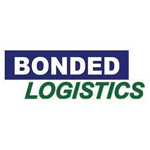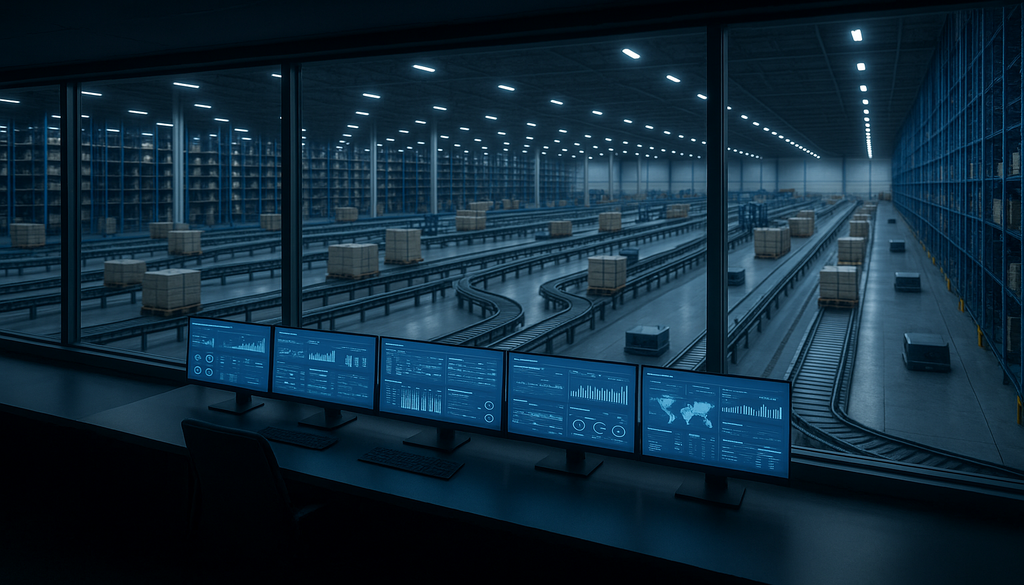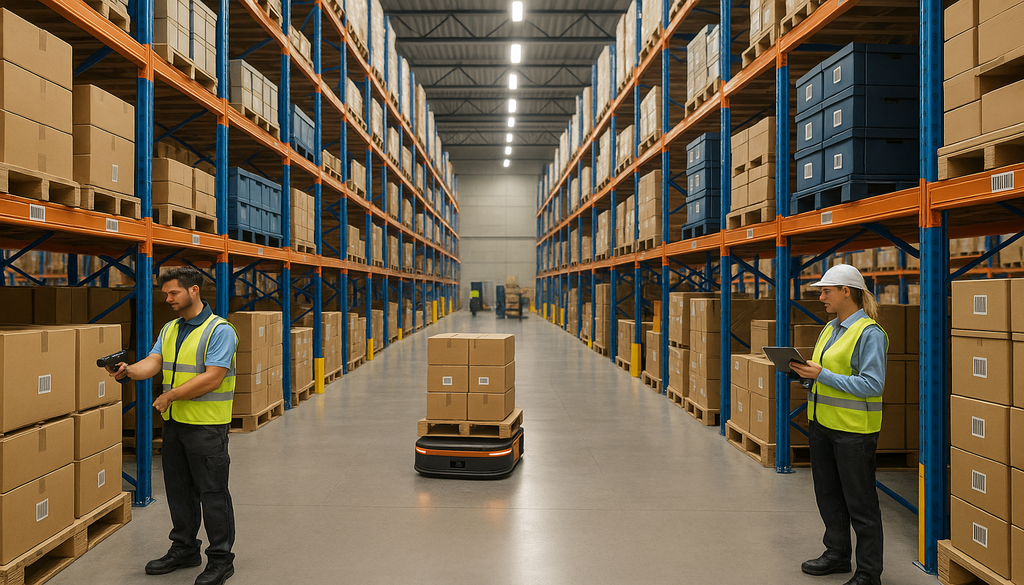1D Barcode vs 2D Barcode: What’s the Difference and Which Scanner is Right for Your Warehouse?
Overview of Barcode Technology in Warehousing
Barcode technology has revolutionized warehouse management since its first commercial use in the 1970s, transforming how businesses track inventory and manage supply chains. What began as simple linear codes on grocery items has evolved into sophisticated data capture systems that form the backbone of modern warehouse operations. Today’s warehouses rely on barcode technology to track millions of SKUs, manage inventory levels with precision, and facilitate seamless order fulfillment processes that would be impossible with manual systems. The evolution from early Universal Product Code (UPC) barcodes to today’s advanced symbologies represents one of the most significant technological advancements in logistics and supply chain management. This progression has enabled warehouses to operate with unprecedented efficiency while meeting the increasingly complex demands of global commerce and e-commerce fulfillment.
The importance of barcodes in modern warehouse management cannot be overstated as they serve as the critical link between physical inventory and digital inventory management systems. In high-volume operations, barcode scanning enables rapid data capture that would be impossible with manual entry, reducing human error rates from approximately 1 error per 300 characters with manual entry to less than 1 error per 3 million scans with barcode technology. These efficiency gains translate directly to operational improvements including faster receiving and putaway processes, more accurate picking operations, and real-time inventory visibility across the supply chain. Additionally, barcode systems provide the traceability required for compliance with industry regulations and quality control standards. As warehouse operations become increasingly automated, barcode technology continues to serve as the foundation that enables robots, autonomous vehicles, and other advanced systems to locate and track inventory with precision.
What are 1D Barcodes and How Do They Work?
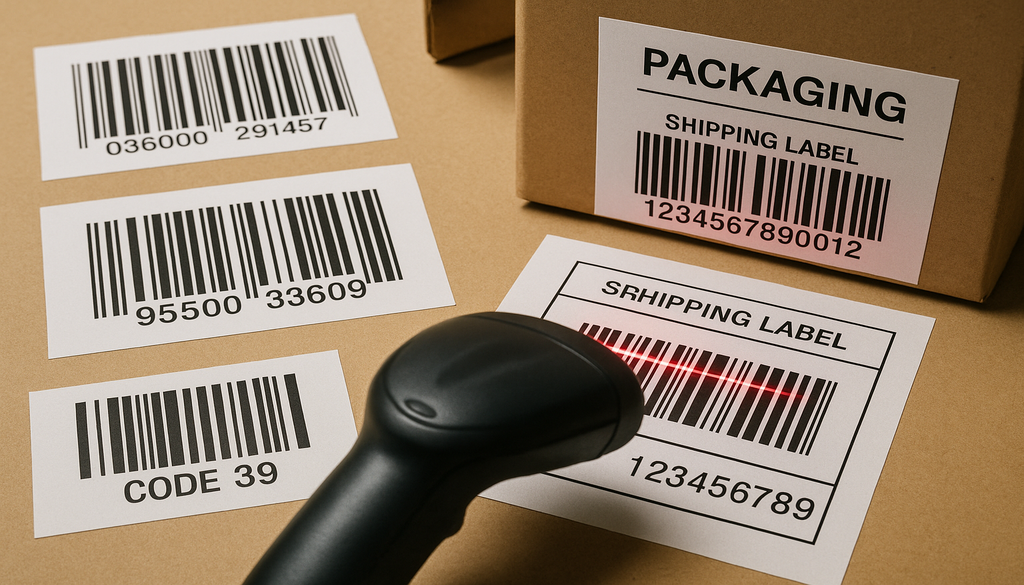
One-dimensional (1D) barcodes, also known as linear barcodes, consist of parallel lines and spaces of varying widths that represent data when scanned. These traditional barcodes function through a straightforward process where the scanner’s light source illuminates the code, and the reflected light is converted into electrical signals that correspond to the pattern of lines and spaces. The decoded information typically represents a reference number that points to detailed product information stored in a database rather than containing extensive data within the code itself. This simple structure makes 1D barcodes ideal for applications requiring quick scans and basic identification, such as point-of-sale transactions and standard inventory tracking. The technology relies on the contrast between the dark bars and light spaces to ensure accurate readings, which is why print quality and scanning angle are critical factors in successful implementation within warehouse environments.
Several types of 1D barcodes are commonly used in warehouse operations, each serving specific purposes based on industry standards and data requirements. Universal Product Code (UPC) and European Article Number (EAN) barcodes remain the standard for retail product identification, while Code 39 and Code 128 offer more versatility for internal warehouse applications due to their ability to encode alphanumeric characters. Interleaved 2 of 5 (ITF) barcodes are frequently utilized for shipping containers and carton labeling because they efficiently encode numeric data in a compact format that works well on corrugated cardboard. GS1-128 (formerly UCC/EAN-128) provides advanced data encoding capabilities for logistics applications, supporting Application Identifiers (AIs) that define data fields for batch numbers, expiration dates, and other critical supply chain information. This variety of 1D symbologies allows warehouse managers to select the most appropriate barcode type for specific tracking requirements within their operations.
The advantages of using 1D barcode scanners in warehouse environments include their cost-effectiveness, reliability, and widespread compatibility with existing systems. These scanners typically cost 30-50% less than their 2D counterparts, making them an economical choice for operations with straightforward tracking needs. Their simplicity translates to durability in challenging warehouse conditions, with fewer optical components that could be damaged during routine use. Additionally, 1D scanners generally offer faster scanning speeds for high-volume operations, with top-tier models capable of processing 200-300 scans per minute under optimal conditions. The technology’s maturity means widespread compatibility with virtually all warehouse management systems and minimal training requirements for warehouse personnel. For many standard warehouse applications—including receiving, putaway, picking, and shipping—1D barcode technology continues to provide an excellent balance of performance, reliability, and cost-efficiency.
Exploring 2D Barcodes: Capabilities and Advantages
Two-dimensional (2D) barcodes represent a significant advancement in data encoding technology, storing information both horizontally and vertically to create matrix patterns rather than simple linear arrangements. This fundamental structural difference enables 2D barcodes to contain substantially more information in a smaller space—typically 100 times more data than a conventional 1D barcode of similar size. Unlike their linear counterparts, 2D barcodes can directly encode comprehensive information including product details, manufacturer information, serial numbers, lot codes, and even custom attributes without requiring database lookups. The sophisticated structure of these codes incorporates error correction capabilities that allow for successful scanning even when portions of the code are damaged or obscured, making them particularly valuable in challenging warehouse environments. Additionally, 2D barcodes can be read from any angle and don’t require precise alignment during scanning, which significantly improves scanning efficiency and reduces the time required to capture data in fast-paced logistics operations.
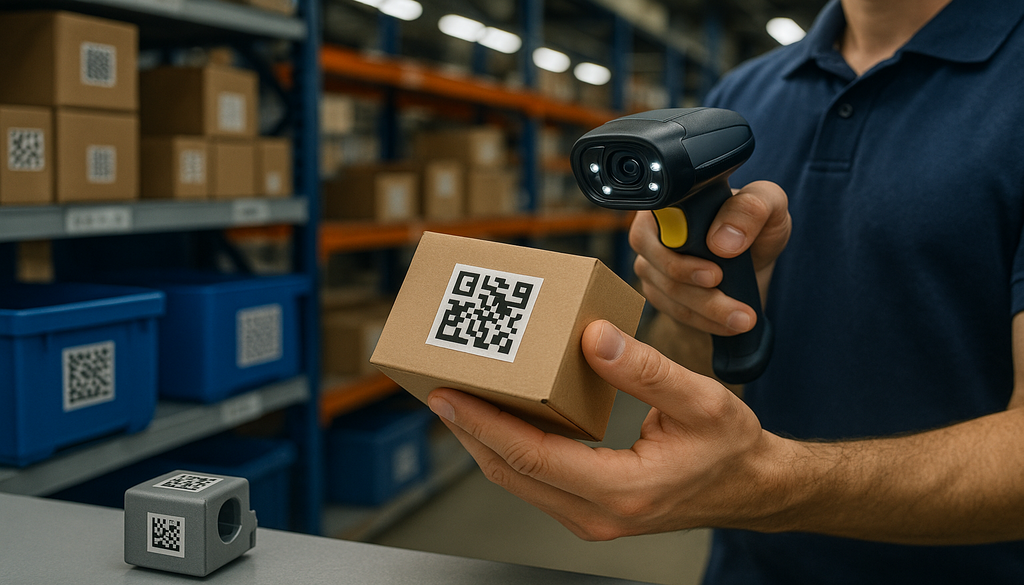
The benefits of implementing 2D barcodes for data storage and retrieval in warehouse settings are substantial and multifaceted. Perhaps most significantly, these advanced codes support comprehensive product traceability throughout the supply chain, encoding manufacturing details, lot numbers, expiration dates, and chain-of-custody information directly within the barcode. This enhanced data capacity facilitates compliance with regulatory requirements in industries like pharmaceuticals, food and beverage, and aerospace, where detailed product provenance is mandatory. The omnidirectional reading capability of 2D barcodes translates to 50-70% faster scanning speeds in real-world warehouse applications compared to traditional linear barcodes that require specific orientation. Furthermore, the built-in error correction allows for successful scans even when codes are partially damaged or printed on irregular surfaces, with leading 2D barcode formats maintaining readability even when up to 30% of the code is damaged. This resilience significantly reduces exceptions and manual interventions in high-volume operations, improving overall warehouse productivity and data integrity.
Among the various types of 2D barcodes, several formats have become prevalent in logistics and supply chain management applications. QR (Quick Response) codes have gained widespread adoption due to their exceptional data capacity—capable of storing up to 7,089 numeric characters—and their ability to be read by smartphones as well as dedicated industrial scanners. Data Matrix codes excel in applications requiring extremely small codes, maintaining readability at sizes as small as 2-3mm square, making them ideal for labeling small items or components in warehouses. PDF417 codes serve as a bridge between 1D and 2D technologies, offering significant data capacity while maintaining compatibility with some linear scanning equipment. The GS1 DataBar family provides enhanced product identification capabilities within a compact format that works well in space-constrained applications. For pharmaceutical and healthcare logistics, the Aztec code has become increasingly important due to its robust error correction and ability to encode detailed medication information required for regulatory compliance. This diversity of 2D formats allows warehouse operators to select the optimal barcode type based on their specific data requirements, space constraints, and environmental conditions.
Comparing 1D and 2D Barcode Scanners
The technical differences between 1D and 2D barcode scanners reflect fundamental variations in how they capture and process information. Traditional 1D scanners use a single line of laser light to read the width and spacing of bars, operating essentially as a one-dimensional imaging system. In contrast, 2D scanners function more like digital cameras, capturing the entire barcode image and then using sophisticated algorithms to decode the information contained within the matrix pattern. This camera-based approach allows 2D scanners to process multiple types of barcodes, including both 1D and 2D symbologies, providing significant flexibility in warehouse environments where various barcode types may be encountered. The optical components in 2D scanners typically include advanced imaging sensors, specialized lighting systems for consistent illumination, and more powerful processors to handle the complex decoding requirements. These technical differences translate to practical considerations including scanning distance capabilities, processing speed for different barcode densities, and the ability to read damaged or poorly printed codes that would stymie conventional laser-based 1D scanners.
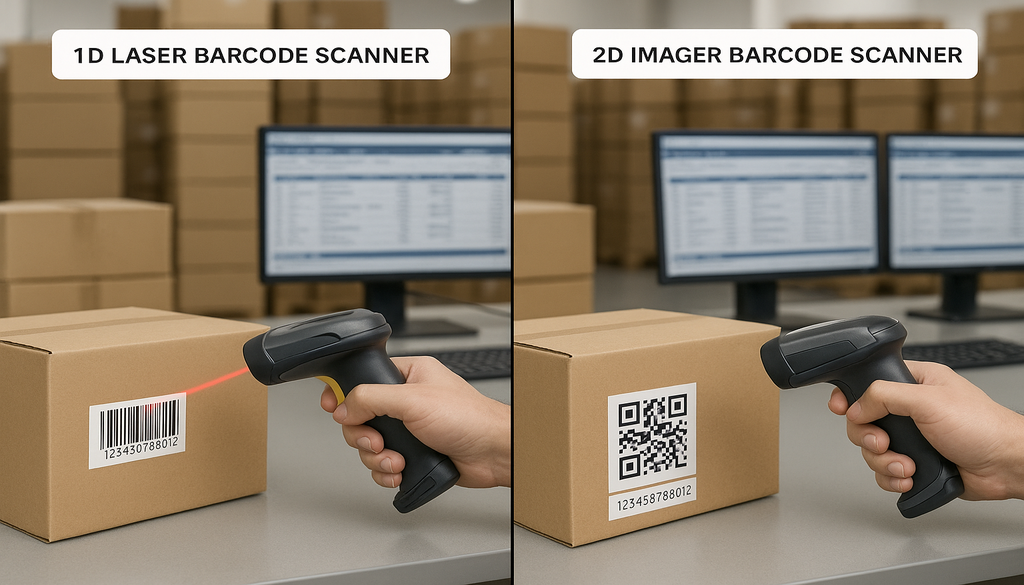
Selecting the appropriate scanner technology requires careful consideration of specific warehouse tasks and operational requirements. For high-volume, straightforward scanning applications like receiving standard pallets or scanning case labels in picking operations, 1D scanners often provide the optimal balance of speed and cost-effectiveness. Their typically lower price point—with industrial-grade 1D scanners generally costing $200-600 compared to $400-1,200 for comparable 2D models—makes them economical for deployment across numerous workstations. Conversely, 2D scanners prove invaluable for complex inventory management scenarios requiring detailed product traceability, serialization, or verification of authenticity. In warehouse returns processing, the ability of 2D scanners to capture comprehensive product information facilitates efficient disposition decisions and accurate restocking. For cycle counting and inventory management applications, 2D scanners can simultaneously capture product identifiers, location codes, and operator information, streamlining the auditing process. Additionally, in cross-docking operations where rapid identification and routing decisions are critical, the omnidirectional reading capability of 2D scanners minimizes handling time and improves throughput by eliminating the need to precisely align barcodes with the scanner.
When choosing between 1D and 2D barcode scanners, warehouse managers must evaluate several critical factors beyond the basic functionality of the devices. The total cost of ownership extends beyond the initial hardware investment to include maintenance requirements, expected service life, and potential productivity gains. While 2D scanners typically involve higher upfront costs, their versatility and future-proofing capabilities may deliver superior long-term value as warehouse operations evolve. Integration capabilities with existing warehouse management systems and other technologies such as voice picking or robotics should be thoroughly assessed to ensure seamless data flow throughout the operation. Environmental considerations including lighting conditions, scanning distances, temperature fluctuations, and exposure to dust or moisture will influence the durability requirements and IP (Ingress Protection) ratings needed for reliable performance. Additionally, factors such as battery life for mobile devices, wireless connectivity options, and ergonomic design for operator comfort become particularly important in high-usage scenarios. The decision ultimately requires balancing immediate operational needs with anticipated future requirements, considering both technical specifications and practical implementation factors to identify the scanning solution that will deliver optimal performance in the specific warehouse environment.
Case Studies: Real-World Applications in Warehousing
A large e-commerce fulfillment operation recently transitioned from 1D to 2D barcode technology across its distribution network, yielding remarkable improvements in operational efficiency and accuracy. Prior to implementation, the company struggled with a 2.3% error rate in order fulfillment and average processing times of 7.2 minutes per order using traditional linear barcodes. After deploying 2D barcode scanners and redesigning product labels to incorporate QR codes containing comprehensive product attributes, the operation reduced error rates to 0.4% and decreased average order processing time to 4.8 minutes—a 33% improvement in productivity. The enhanced data capacity of 2D barcodes enabled the company to encode product dimensions, weight, storage requirements, and handling instructions directly in the label, eliminating the need for warehouse associates to reference separate documentation. Additionally, the omnidirectional scanning capability reduced the time spent aligning products with scanners, particularly beneficial during peak season when temporary staff with minimal training handled high volumes. The implementation costs, including hardware upgrades and relabeling, were recouped within nine months through labor savings and reduced error-related expenses, demonstrating the compelling return on investment potential of advanced barcode technology when applied strategically in high-volume fulfillment operations.
In the pharmaceutical distribution sector, a mid-sized regional distributor implemented a hybrid barcode scanning solution that strategically deployed both 1D and 2D technologies based on specific workflow requirements. The company maintained 1D barcode scanners for standard case-level receiving and shipping verification where simple product identification was sufficient, while implementing 2D scanning capabilities at critical control points requiring enhanced traceability. This approach enabled compliance with Drug Supply Chain Security Act (DSCSA) requirements for item-level tracking while optimizing technology investments. The 2D scanners deployed at quality control stations capture detailed information including lot numbers, expiration dates, and manufacturing details directly from Data Matrix codes on individual packages. This data automatically populates the warehouse management system, eliminating manual entry that previously required an average of 42 seconds per product and had a 1.7% error rate. The hybrid approach delivered comprehensive traceability while limiting the capital investment required for a full-scale technology transition, with implementation costs approximately 40% lower than a complete conversion to 2D scanning. The phased approach also minimized operational disruption and training requirements while enabling the company to meet evolving regulatory compliance standards.
A global automotive parts distributor demonstrates how strategic implementation of appropriate barcode technology can transform inventory management practices across complex supply chains. The company manages over 380,000 SKUs ranging from tiny electronic components to large body panels, each presenting unique identification challenges. Rather than adopting a one-size-fits-all approach, the distributor conducted a comprehensive analysis of product characteristics and handling requirements to determine optimal barcode solutions for different product categories. High-volume, standardized components continue to utilize traditional 1D barcodes and laser scanners for efficient processing, while specialized components requiring detailed tracking now feature 2D Data Matrix codes that contain comprehensive part information, supersession data, and handling requirements. This targeted implementation approach delivered a 28% reduction in mispicks and a 23% improvement in inventory accuracy within the first year, while limiting technology investment to the areas of highest potential return. Particularly notable was the improvement in returns processing, where the enhanced data captured through 2D barcodes reduced disposition decision time by 64% and significantly improved the accuracy of warranty claims processing. The case illustrates how thoughtful analysis of operational requirements can lead to optimal barcode technology decisions that balance performance requirements with implementation costs.
Future Trends in Barcode Technology and Scanning Solutions
The evolution of barcode technology continues to accelerate, with several emerging innovations poised to transform warehouse operations in the coming years. Direct Part Marking (DPM) techniques are gaining traction for permanent product identification, using methods like laser etching, dot peening, and chemical etching to apply codes directly to products rather than using traditional labels. This approach ensures barcode permanence throughout the product lifecycle, particularly valuable for high-value assets and components requiring cradle-to-grave traceability. Augmented Reality (AR) barcode scanning represents another frontier, overlaying digital information onto physical warehouse environments through smart glasses or mobile devices. Early adopters report picking accuracy improvements of up to 37% with AR-enabled barcode systems that visually guide workers to correct locations and provide instant verification of selections. Color barcodes, which expand data capacity by incorporating multiple colors beyond traditional black and white, offer promising applications for specialized inventory management scenarios. Additionally, near-field communication (NFC) and RFID technologies are increasingly being integrated with barcode systems to create hybrid identification solutions that combine the universal readability of barcodes with the advanced capabilities of radio frequency identification, particularly beneficial for high-value inventory requiring enhanced security and traceability throughout the supply chain.
The continued convergence of barcode technology with other advanced warehouse technologies will likely reshape logistics operations in fundamental ways. Machine learning algorithms are being incorporated into scanning solutions to improve read rates for damaged or poorly printed barcodes, with some systems demonstrating the ability to successfully decode barcodes that are up to 60% damaged or obscured. Cloud-based barcode management platforms enable centralized control of barcode generation, validation, and data management across multiple facilities, ensuring consistency while simplifying compliance with evolving standards and regulations. The integration of barcode scanning with voice-directed workflows shows particular promise, with combined systems allowing workers to verify picks through both auditory confirmation and barcode validation, reducing error rates by up to 80% in complex picking operations. Perhaps most significantly, advanced image recognition capabilities are beginning to supplement traditional barcode scanning, using artificial intelligence to identify products directly from their visual characteristics when barcodes are unavailable or damaged. These converging technologies suggest a future where barcode scanning becomes one component of a comprehensive digital identification ecosystem rather than a standalone solution, offering unprecedented flexibility and resilience in warehouse operations.
Predictions for the evolution of barcode usage in logistics and warehousing point toward increasing sophistication and integration with broader supply chain systems. Industry experts anticipate the continued growth of serialized 2D barcodes that uniquely identify individual items rather than just product types, enabling precise tracking and authentication throughout global supply chains. This item-level visibility will become increasingly critical as regulatory requirements expand across industries and consumers demand greater transparency regarding product origins and handling. The miniaturization of barcode technology will likely continue, with readable codes potentially shrinking to microscopic sizes through advances in imaging and nanomaterials. Simultaneously, the data capacity of codes will expand dramatically, potentially enabling entire technical manuals or detailed product histories to be encoded directly within a small barcode. As sustainability concerns grow, environmentally friendly barcode solutions including biodegradable labels and low-energy electronic ink displays may replace traditional printed codes in certain applications. Additionally, the role of barcodes in automated warehouses will evolve from primarily human-readable identifiers to machine-readable navigation and verification tools that guide robots and autonomous vehicles through complex fulfillment tasks, fundamentally changing how these traditional identification tools function within increasingly automated logistics environments.
Conclusion
The distinction between 1D and 2D barcode technologies represents a critical decision point for warehouse operations seeking to optimize efficiency and data management capabilities. As we’ve explored throughout this article, each technology offers specific advantages that align with different operational requirements and budget considerations. One-dimensional barcodes continue to provide a cost-effective, reliable solution for straightforward inventory tracking applications, while two-dimensional formats deliver enhanced data capacity, damage resistance, and scanning flexibility that prove invaluable in complex logistics environments. Rather than viewing these technologies as competing alternatives, forward-thinking warehouse managers are increasingly adopting strategic implementations that leverage both formats according to specific workflow requirements and product characteristics.
The real-world case studies demonstrate that successful barcode implementations depend not only on the technology selected but also on thoughtful integration with existing systems and careful consideration of long-term operational needs. As warehouse operations continue to evolve in response to e-commerce growth, regulatory requirements, and automation opportunities, the foundational role of barcode technology remains secure while its capabilities expand. Warehouse managers should approach barcode scanner selection as a strategic decision that impacts overall operational efficiency, data accuracy, and future scalability rather than merely a procurement choice. By understanding the fundamental differences between 1D and 2D technologies and aligning scanner selection with specific operational requirements, logistics professionals can optimize this essential component of modern warehouse management.
Frequently Asked Questions (FAQ)
Q1: What are the main factors to consider when choosing between a 1D and a 2D barcode scanner for a warehouse?
When selecting a barcode scanner for your warehouse, consider the type of data you need to capture, the environment in which the scanner will be used, and the integration capabilities with your existing warehouse management system. 1D scanners are typically sufficient for basic inventory tracking, while 2D scanners offer enhanced data capture suitable for complex logistics operations. Additionally, evaluate the durability and ease of use of the scanner to ensure it meets the demands of your warehouse environment. Consider your current needs but also future requirements, as investing in 2D scanners may future-proof your operations as data requirements become more complex. Finally, analyze your scanning volume, distance requirements, and budget constraints to determine the optimal scanner technology for your specific operation.
Q2: Can 2D barcode scanners read traditional 1D barcodes?
Yes, most 2D barcode scanners are designed with backward compatibility, allowing them to read traditional 1D barcodes as well as 2D codes. This universal reading capability is one of the key advantages of investing in 2D scanning technology, as it provides flexibility to work with various barcode types throughout your supply chain. However, it’s important to note that the reverse is not true—1D scanners cannot read 2D barcodes, as they lack the imaging capabilities required to capture and decode matrix-style codes. This asymmetrical compatibility is an important consideration when planning for mixed barcode environments or phased implementation of new barcode formats.
Q3: How does the cost difference between 1D and 2D barcode systems impact ROI for warehouses?
The initial investment for 2D barcode systems is typically 30-50% higher than comparable 1D systems, primarily due to the more sophisticated imaging technology required. However, the ROI calculation should consider several factors beyond upfront costs. 2D systems often deliver greater operational efficiencies through faster omnidirectional scanning, reduced exceptions from damaged codes, and elimination of database lookups when information is encoded directly in the barcode. For operations with complex tracking requirements, the enhanced data capacity of 2D codes can eliminate separate tracking systems and reduce errors that lead to costly exceptions. The appropriate technology choice depends on your specific warehouse requirements, with high-volume operations handling diverse products generally seeing faster ROI from 2D systems despite higher initial costs.
Q4: What industries benefit most from upgrading to 2D barcode scanning technology?
Industries with strict regulatory requirements for product traceability—such as pharmaceuticals, medical devices, aerospace, automotive, and food and beverage—benefit significantly from 2D barcode technology. These sectors must maintain detailed records of product origins, handling, and chain of custody, which 2D barcodes can encode directly within the label. E-commerce fulfillment operations also see substantial benefits due to the higher scanning speed and accuracy when processing diverse products at high volumes. Additionally, industries managing high-value assets or components with complex maintenance requirements benefit from the ability to encode comprehensive information directly in 2D barcodes, facilitating accurate service records and authentication protocols throughout the product lifecycle.
Here is the JSON-LD FAQ Schema appropriately formatted for the extracted FAQs from the blog post content:
“`html
“`

